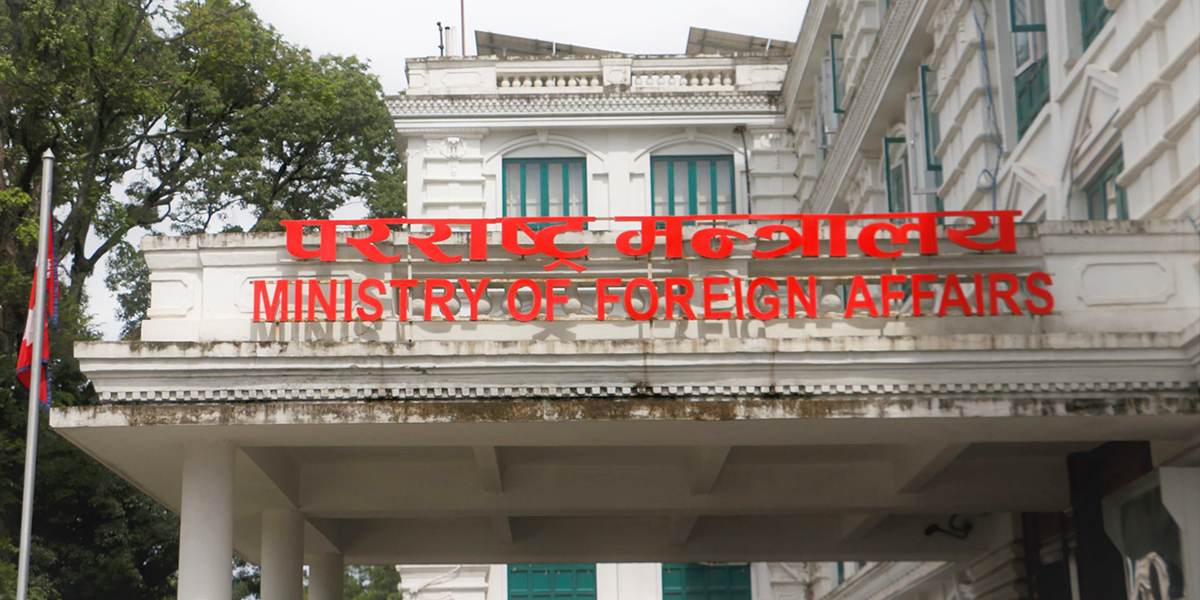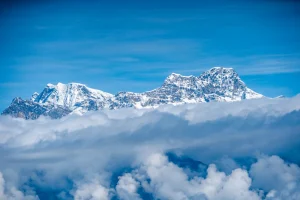Limpiyadhura, Lipulekh and Kalapani are integral territories of Nepal: Government of Nepal

Two days after the agreement, the Ministry of Foreign Affairs made its position public in response to a journalist’s question.
Kathmandu. The government has informed that Limpiyadhura, Lipulekh and Kalapani are integral parts of Nepal and has been urging the Indian government not to carry out any activities such as road construction, expansion, border trade in the area.
The statement was made in response to questions from the media regarding border trade between India and China through Lipulekh, a Nepali territory. The ministry has expressed its position in three clear points.
The first point states, ‘The Nepalese government is clear that the official map of Nepal has been included in the constitution of Nepal and that the map shows Limpiyadhura, Lipulekh, and Kalapani east of the Mahakali River as integral parts of Nepal.’
The Nepal government is also aware of the fact that it has been urging the Indian government not to carry out any activities such as road construction and expansion, border trade, etc. in the area, and in the second point, it says, ‘It is also aware of the fact that even the friendly country China has been informed that the said area is Nepali territory.’
The third point also mentions that the Government of Nepal has been committed to resolving the border issue between the two countries through diplomatic means, based on historical treaties and agreements, facts, maps and evidence, in accordance with the spirit and spirit of the close and friendly relations between Nepal and India.
The Ministry of Foreign Affairs was forced to make this statement after the issue was discussed in the media. Although the issue was raised on Monday, the ministry had not responded.
While Prime Minister KP Sharma Oli was preparing to visit both neighboring countries, India and China reached a bilateral understanding on an area claimed by Nepal without informing Nepal.
Oli, who is about to visit India for the first time after 14 months as Prime Minister, is currently in serious trouble. He had already been to China and is preparing to go to China again on Bhadra 16.
Diplomatic experts say that not only has Nepal made a claim, but also made its map public and included it in the constitution. Even when Nepal was asked about the location, India and China’s agreement to open the border bilaterally without asking Nepal is tantamount to a ‘diplomatic slap’ on Oli for including the map in the constitution.
Prime Minister Oli, who was unable to visit India and had to persuade all Indian sources, needed to state Nepal’s position on this issue before going to India and China. And, it is also necessary to remind the diplomatic note. But the government has issued a statement saying that it is a response to journalists rather than a bilateral agreement.
India and China had agreed on this 35 years ago. But it could not be implemented. Even after India and China agreed to trade through that area twice, the Nepal government has not even been able to raise questions against them.
Political leaders who are successful in easily misleading the common people are only doing such issues for political consumption. However, in 2015, the then Prime Minister Sushil Koirala had sent a diplomatic note to both countries expressing his dissatisfaction.
It is a diplomatic shame that Nepal has failed to ask both its neighbors about the agreement between India and China to use the trade route through Lipulekh Pass and raise the issue during visits, despite knowing about it. Foreign officials say that even now, the Ministry of Foreign Affairs is making public its opinion by saying it is a response to a journalist. ‘Unless the political leadership gives the courage, the diplomatic leadership cannot do anything,’ said an official.
One should seek consensus on such issues by putting one’s own point of view. Angrily including territory on the map will not make it one’s own. Nepal should be able to raise this issue at the diplomatic and political level, with the agreement of two big countries, so that it remains registered there. Experts in diplomatic affairs say that it is necessary to raise such issues not for political consumption but for the country’s interest.
The US has increased tariffs on India to create pressure on Russia. This is also the reason why India seems to be getting closer to China, forgetting many of China’s excesses. Officials say that Nepal’s failure to speak out or not speaking out on the issue of Nepal’s territory being annexed when India signed an agreement with its northern neighbor, China, is a sign of government shamelessness and cowardice.

India has now agreed with China to reopen the Lipulekh border. India and China will trade through the territory that Nepal has included in its map, but the Nepal government seems to be unaware of this. They reached an agreement on this issue on Monday. However, the Indian Foreign Secretary returned from his visit to Nepal on Monday.
Foreign affairs experts and former foreign ministers have said that it is a serious matter for the two countries to agree on the use of Nepali land without informing Nepal. In fact, after India and China reached such an agreement in 2014, Nepal had sent diplomatic letters to China and India, including old maps and facts.
The border crossing was closed for trade purposes after a clash between Indian and Chinese troops in eastern Ladakh in 2020. Last December, India and China had agreed to resume the movement of Indian pilgrims on the Kailash Mansarovar Yatra through this border crossing, without Nepal’s consent and without informing the Nepali government.
Indian External Affairs Ministry spokesperson Randhir Jaiswal had said that an agreement was reached with visiting Chinese Foreign Minister Wang Yi to reopen three traditional border crossings, including Lipulekh, for trade purposes. According to him, these are the Lipulekh Pass in Uttarakhand, the Sipkila Pass in Himachal Pradesh, and the Nathula Pass in Sikkim. “India and China have agreed to facilitate trade through all the designated border crossings,” Jaiswal told reporters on Tuesday, informing about the agreement.
The ninth point of the agreement between India and China mentions the commercial use of the Lipulekh Pass. This agreement was signed by the foreign ministers of India and China, S. Jaishankar and Wang Yi, respectively. Not only India, but also the Chinese Foreign Ministry issued a statement stating that an agreement has been reached to open three trade points.










